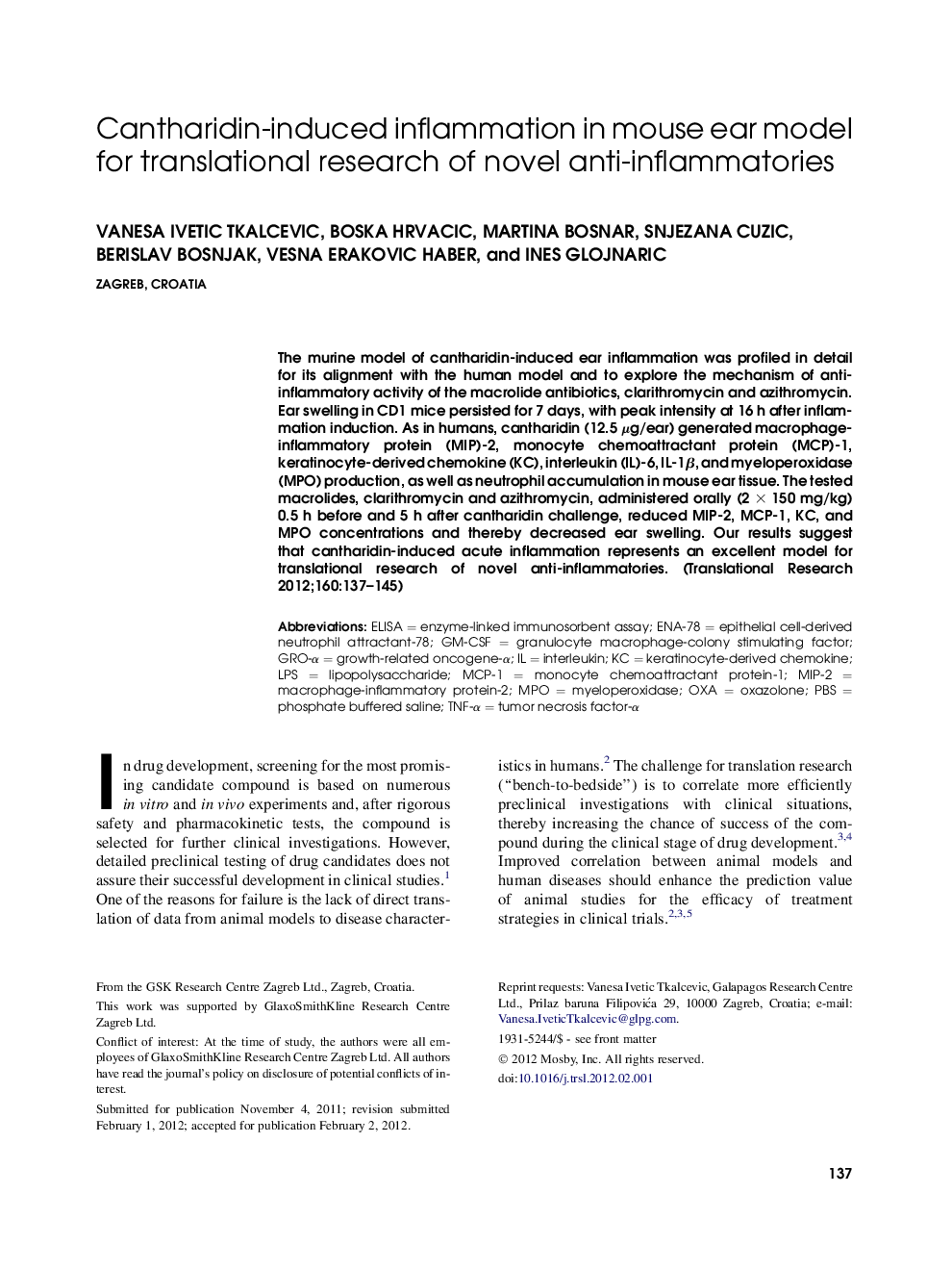| Article ID | Journal | Published Year | Pages | File Type |
|---|---|---|---|---|
| 3840689 | Translational Research | 2012 | 9 Pages |
The murine model of cantharidin-induced ear inflammation was profiled in detail for its alignment with the human model and to explore the mechanism of anti-inflammatory activity of the macrolide antibiotics, clarithromycin and azithromycin. Ear swelling in CD1 mice persisted for 7 days, with peak intensity at 16 h after inflammation induction. As in humans, cantharidin (12.5 μg/ear) generated macrophage-inflammatory protein (MIP)-2, monocyte chemoattractant protein (MCP)-1, keratinocyte-derived chemokine (KC), interleukin (IL)-6, IL-1β, and myeloperoxidase (MPO) production, as well as neutrophil accumulation in mouse ear tissue. The tested macrolides, clarithromycin and azithromycin, administered orally (2 × 150 mg/kg) 0.5 h before and 5 h after cantharidin challenge, reduced MIP-2, MCP-1, KC, and MPO concentrations and thereby decreased ear swelling. Our results suggest that cantharidin-induced acute inflammation represents an excellent model for translational research of novel anti-inflammatories.
